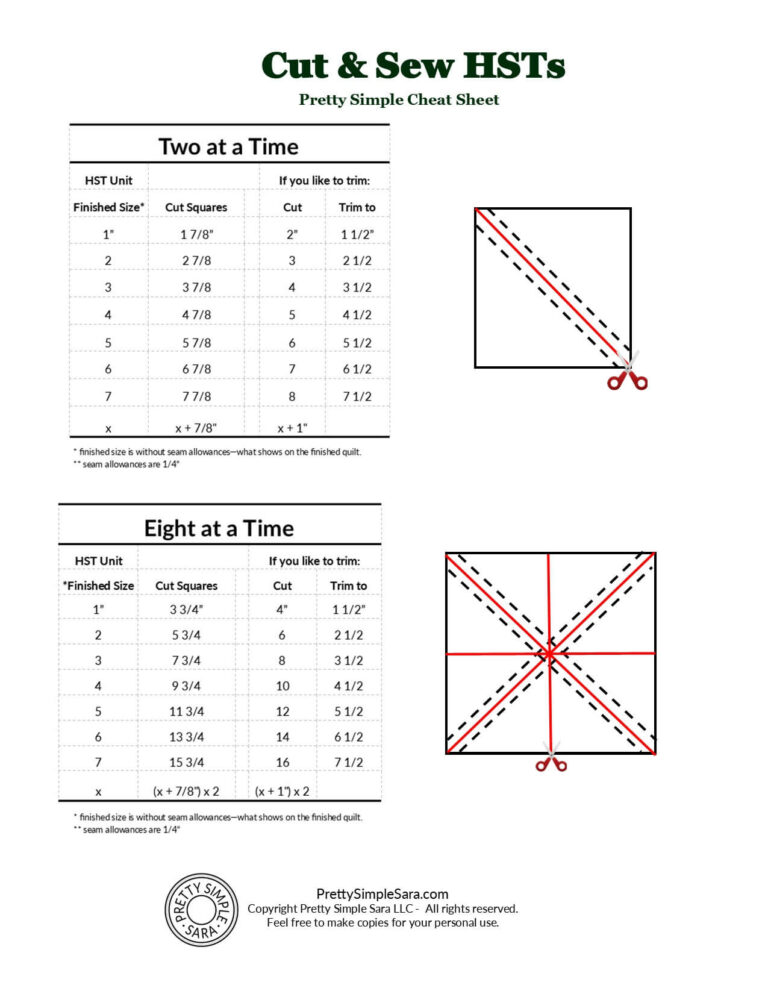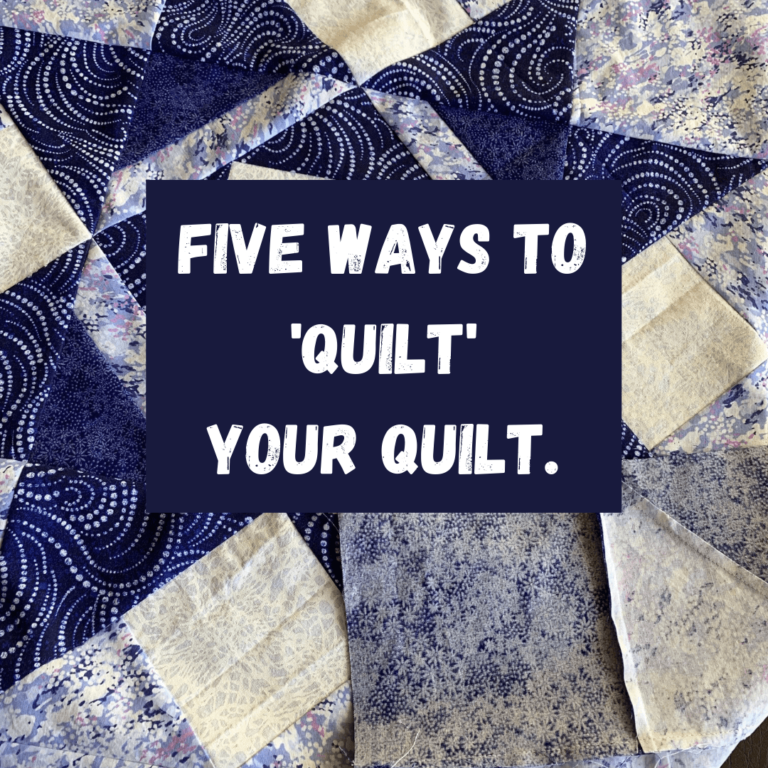Tackling unfinished quilts
If you do any kind of hobby, it’s likely that you will eventually have some projects that you started with high hopes, then
- you got stuck on a step,
- life got in the way, or
- you just lost interest.
Quilters like to call these UFOs – which stands for UnFinished Object.

Unfortunately these can weigh you down creatively in a couple ways:
Avoidance
You avoid your sewing room because you just don’t want to work on THAT project, but you can’t bring yourself to start another project. If you won’t allow yourself to start a new project your creativity stagnates, not to mention you aren’t actually sewing!
Guilt
You buy more fabric for another quilt and that unfinished project gets set aside ‘just for now’. As it sits there (and perhaps gathers friends) the weight of it wears you down with guilt and clouds your creativity.
The solution to your unfinished object pile
UFOs are just another form of clutter. And just like cleaning out your basement, if you spend a little time tackling the clutter you will feel much lighter and your creativity can rebound.
I recently tackled this same issue myself when I moved into my new studio. I had boxes that had been stored for years while we were living in a house with limited space for sewing. I also had boxes and bins my mother had passed on to me when she downsized and stopped sewing.
There were so many projects!

Step one: Marie Kondo the pile
If you are familiar with Marie Kondo’s method of decluttering you know that she first gathers all items of a particular category in one place, then touches each one to see if it ‘sparks joy’. She recommends only keeping things in your home that spark joy.
Put all those projects in one place
In the case of my boxes and bins, I separated out all the projects. These meant started but not finished projects and also little groups of coordinated fabrics with projects not even defined yet.

Examine each project and see if it sparks creativity
This is really the heart of the matter. Hold the fabric or the pattern in your hands and asks yourself whether it sparks joy and your creativity.
A few questions to guide you:
- Do you even want to do this project? Will you enjoy the process? Or do you just want to get it over with?
- Did you get stuck on a technique? If you could figure out how to do the technique would you want to finish it? Can you find someone to help you learn that technique? Maybe there’s new help online that wasn’t there when you got stuck?
- Did you make a mistake and now just the whole thing makes you feel like a failure? I’m all for working through the hard things, but remember, this is your hobby. What are you trying to achieve with your hobby time? Feel free to get rid of those things that make you feel bad!
- Do you just not like the fabric anymore? Are there some fabrics in a project you do like that perhaps you could make a different project from or add to your stash? It’s okay to dismantle the project if you just like the fabrics, but not the pattern.
- Do you look at it and think about what a nice quilt it will make when you get the time to finish it?
- Does it feel like it will be fun to sew?
…make sure each item is sparking creative joy and not just the memory of how much money you spent or a wish that you were the kind of person who loves to do super detailed piecing, or use bold bright colors.
In my case there were definitely some projects that made me smile, and some that inspired a bit of a creative challenge that intrigued me.

But there were lots that just didn’t make the cut. It took a little grit to allow myself to say “I don’t really want to finish this, and that’s okay”, but in the end I kept only projects I truly want to use my creative energy to finish.
Step Two: Donate and display
Make a pile of just those projects that you actually want to finish. If you have a lot you might need to put them in a bin, but try to display a couple where you can see them and look forward to doing them.

Take the rest of the projects and donate them. If they are clearly defined projects, you can donate them to a regular donation place like Salvation Army or Goodwill. If they are more random projects you could try a quilt guild. They are not doing anyone any good sitting in your home undone. If you donate them they have a chance of becoming a quilt.
If they are finished tops that just need quilting, consider getting them quilted by a longarmer. Even if you don’t like the top yourself anymore, if they are turned into a quilt you can donate them to a battered women’s or homeless shelter. If you can’t afford the longarmer, see if one will just take your tops. They can use them to practice, and then donate them as well.

Step Three: Work through one at a time
Make a plan and give yourself time
I have a few bins of UFOs. I just pick one UFO to work on at a time amongst the other projects that I’m working on. The most important part of the plan is that once I finish that UFO, I immediately head back to the bins and grab the next project.
If you have the space, keep at least one UFO out where you can see it. The next time you feel like going to the store to pick out new fabric for a new project you will remember your UFOs and pick one to finish.
If you have the space, keep at least one UFO out where you can see it. The next time you feel like going to the store to pick out new fabric for a new project you will remember your UFOs and pick one to finish.
Still not making progress?
If the worst thing you can think of is just plowing through all those unfinished projects, then consider a couple things
Are you sure you really kept only the ones that spark joy?
Certainly, there are going to be other projects that come up that need to be created – if your first grandchild is coming you’re not going to wait to make that baby quilt until all your UFOs are done. But if you truly just don’t feel like doing any of the projects…go through that pile again and make sure each item is sparking creative joy and not just the memory of how much money you spent or a wish that you were the kind of person who loves to do super detailed piecing, or use bold bright colors.
Allow yourself to continue to purge
As you work through the UFOs, you may find that some of the projects in there no longer spark creative joy. Let them go! Just because they are in the bin does not mean that you have to complete them. Your UFO bin will get smaller and smaller and you will have so many more completed quilts!
Enjoy the process
The most important thing to remember is that you are quilting because you enjoy the process. There’s no reason to push through making a quilt if you are working on something you don’t even like!






